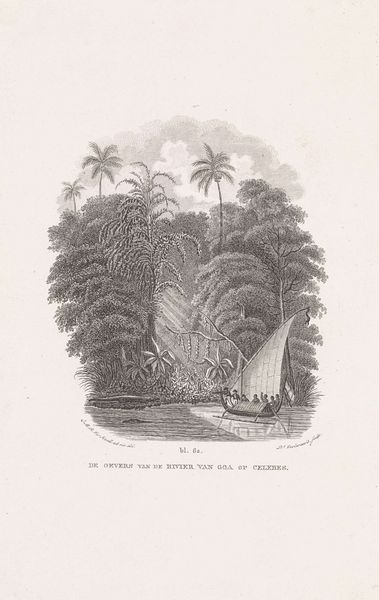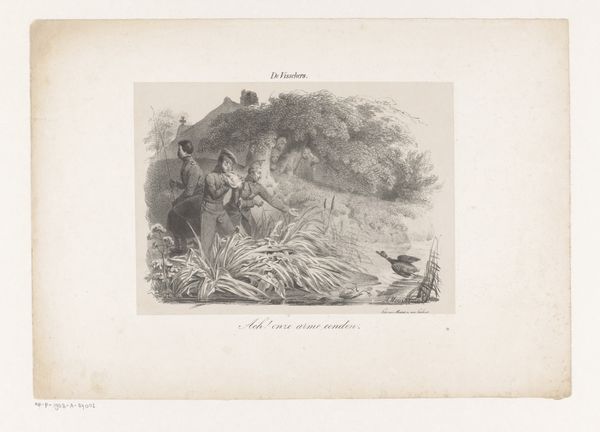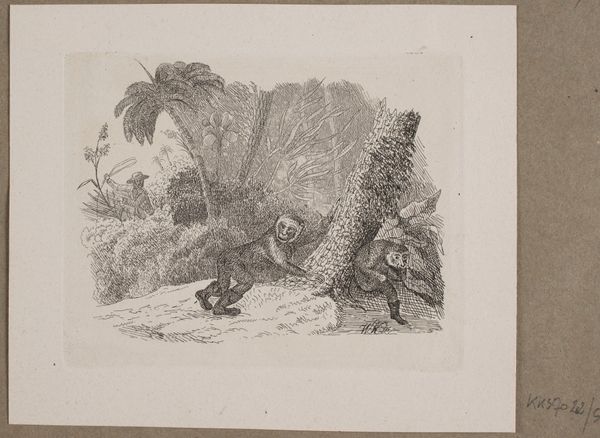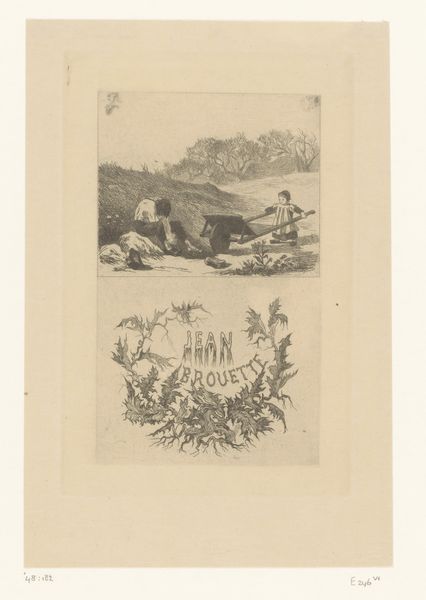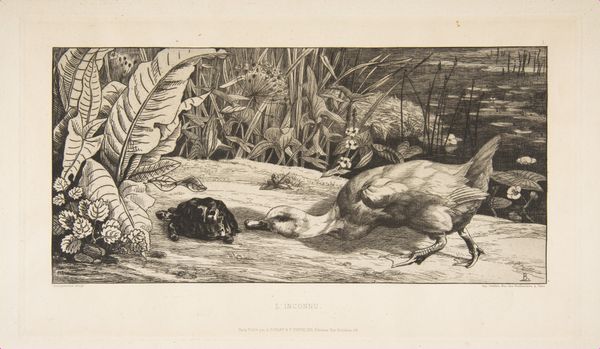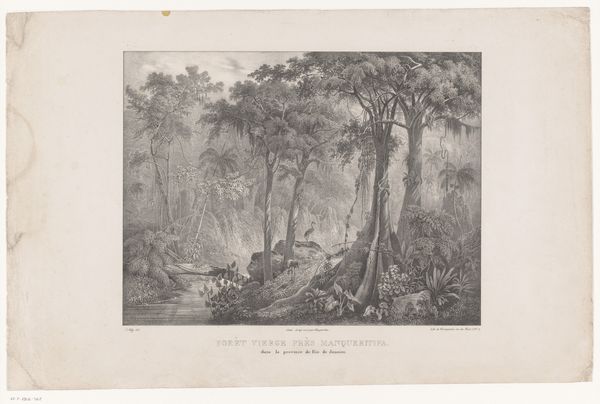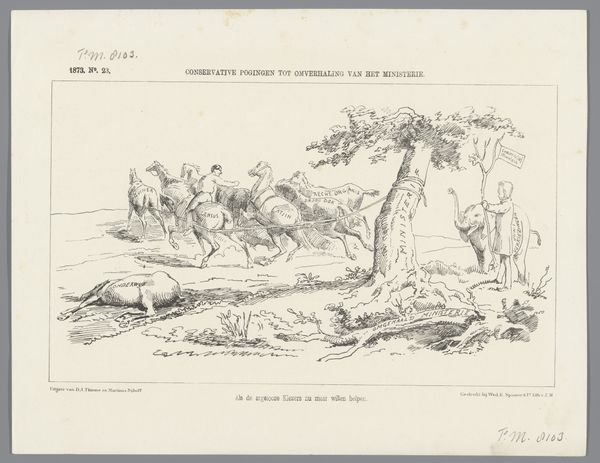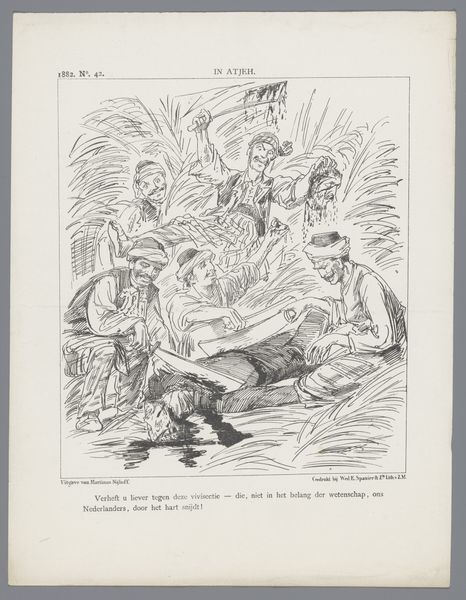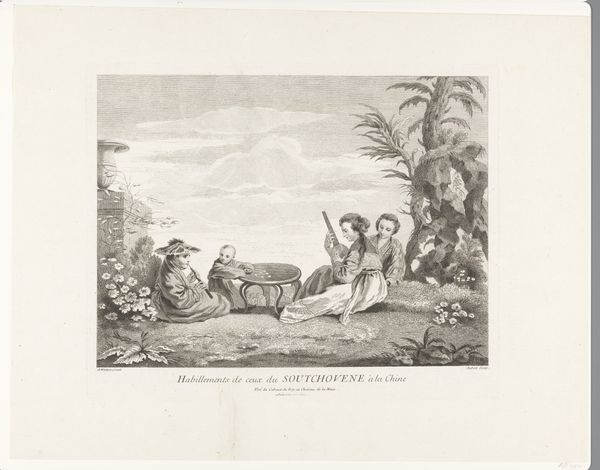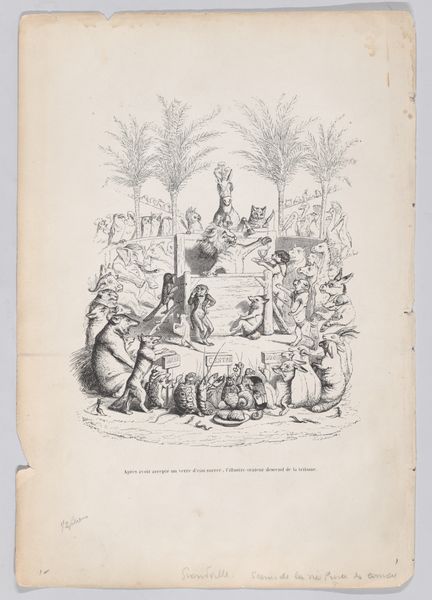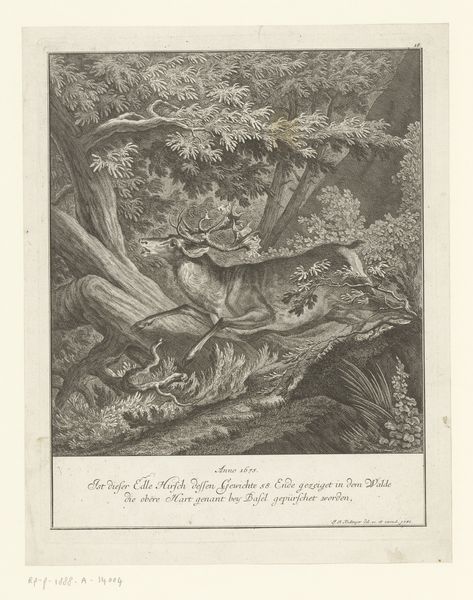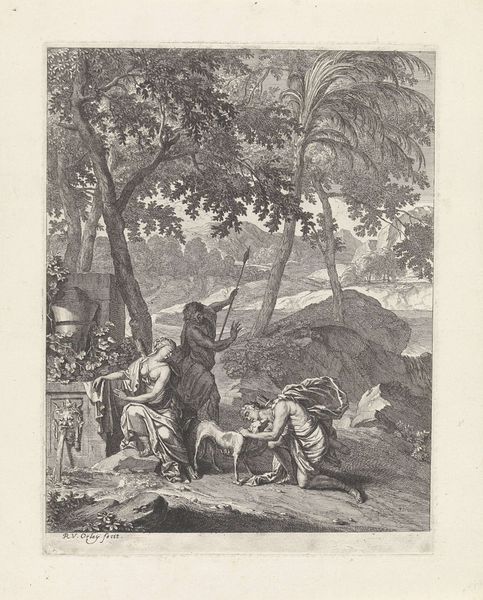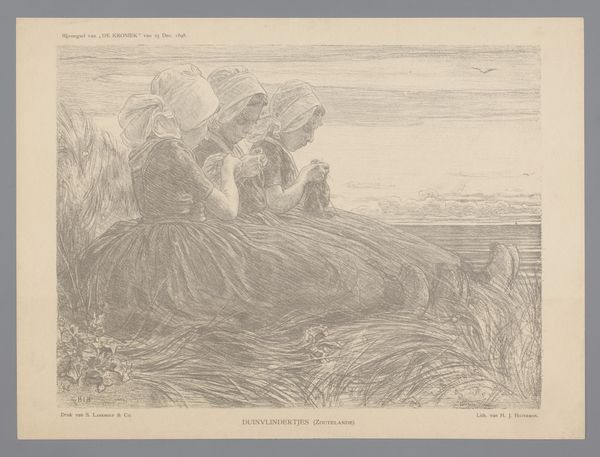
Zwarte mannen en vrouwen slaan op de vlucht voor een witte fotograaf 1867 - 1894
0:00
0:00
#
comic strip sketch
#
imaginative character sketch
#
light pencil work
#
quirky sketch
#
personal sketchbook
#
idea generation sketch
#
sketchwork
#
sketchbook drawing
#
storyboard and sketchbook work
#
sketchbook art
Dimensions: height 260 mm, 352 mm
Copyright: Rijks Museum: Open Domain
Curator: This unsettling image by Gustaaf Leonardus Adolf Amand, likely created between 1867 and 1894, is titled "Zwarte mannen en vrouwen slaan op de vlucht voor een witte fotograaf," which translates to "Black men and women flee from a white photographer." Editor: It's immediately striking—a chaotic scramble away from the central figure. The feeling it evokes is pure dread. The sharp contrast of the single photographer in the foreground compared to the group of people fleeing is haunting. Curator: Indeed. Consider the loaded symbolism here. The photograph, a technology often presented as objective, becomes in this image a tool of disruption and perhaps even oppression. These individuals clearly associate the camera with something negative, causing immediate flight. It prompts the viewer to ponder the impact of Western image-making on colonized peoples, who are here transformed into figures of prey. The act of photographing can be seen as an exertion of power. Editor: And within that power dynamic lies the dehumanization inherent in colonialism. Notice how the individuals are drawn in such a way that almost veers into caricature, reinforcing stereotypes. There’s also a clear implication about whose stories get told and who controls the narrative. This artwork is definitely a powerful visual commentary on race, representation, and colonial exploitation. Curator: Right, the visual codes create an inescapable dialogue with history. The frenzied reaction to the camera highlights an inherent distrust – were these photographs used to categorize, control, or exoticize? How does this impact the symbolic value of the photograph as evidence? Editor: Perhaps what's most unsettling is the implication of the viewer in this dynamic. We, through looking, become complicit in the gaze that caused the initial flight. The artwork then demands critical engagement not only with history but also with our present-day viewing habits and biases. Curator: A poignant reminder that images are never neutral, carrying layered histories within their frames. I am still mulling over the loaded implications that lie beneath its deceptively simple presentation. Editor: Agreed. The way it pushes us to examine our own assumptions makes it not just a historical document but a relevant challenge to our contemporary world.
Comments
No comments
Be the first to comment and join the conversation on the ultimate creative platform.
